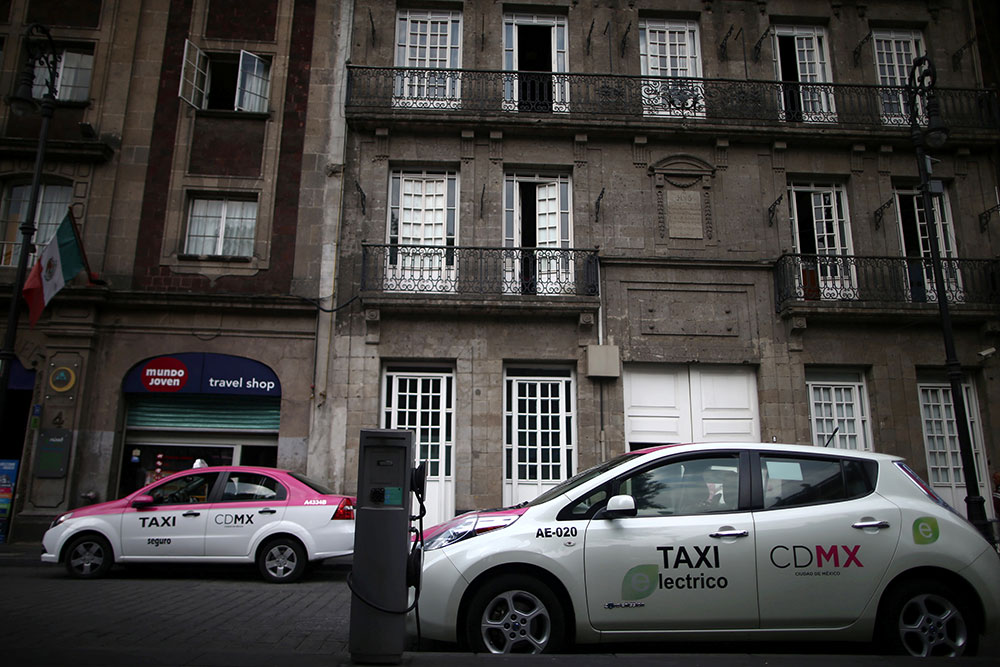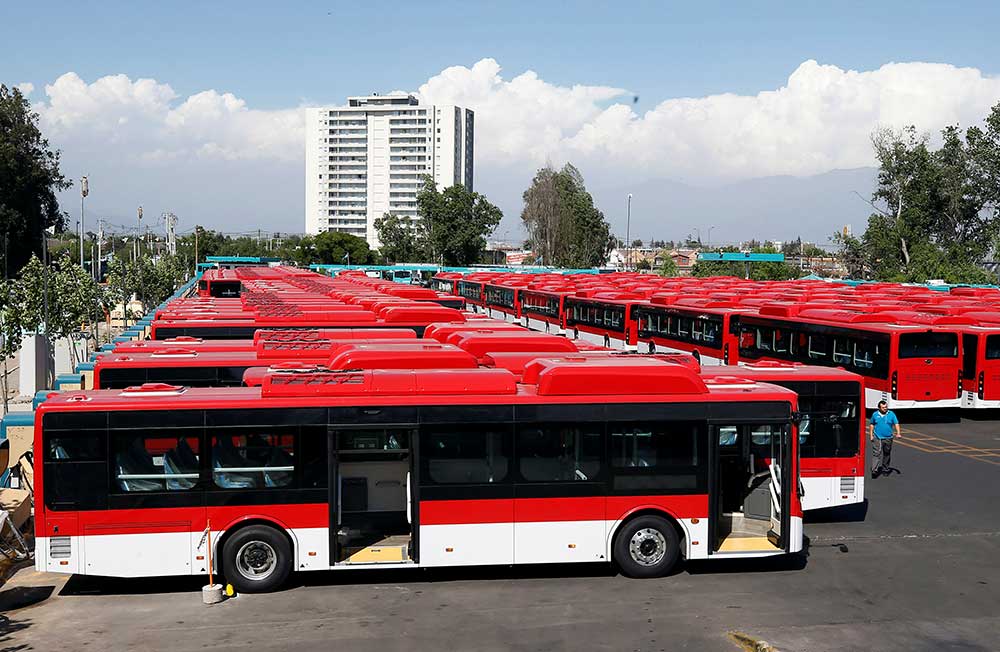The electric vehicle landscape in the Americas is varied, with the emphasis on personal transport in the north and public transport in the south. The policy impetus also fluctuates from country to country. While Costa Rica is forging ahead with an ambitious plan to do away with gas-fueled vehicles altogether, until the administration changed the United States had driving backward to gasoline.

Mexico has a handful of federal and regional policies promoting EV purchases. Estimates on the size of its charging network vary from around 1,100 to 2,500 charging points depending on who you ask, up from 700 in 2017. Sales of PHEVs are higher than BEVs due to the limited reach of the charging network.
In August 2020, the federal government exempted BEVs from import duty, and both BEVs and PHEVs were already exempt from new vehicle tax. In 2019, the government also introduced elevated federal tax benefits for EVs, capping the deduction at 250,000 pesos ($12,950) for purchases and 285 pesos per day for leases, compared to caps of 175,000 and 200 pesos per day for purchases and leases of ICE cars.
The Mexican government’s goal to combat pollution in large cities such as Mexico City, coupled with the sheer size of the country, is why it is Latin America’s second-largest automobile market of 1.53 million sold in 2018, and is leading in plug-in EV sales, with 1,785 BEVs and PHEVs (excluding Teslas, which are available) purchased. In real terms, this is small beer, but it is a step in the right direction. Mitta, a major car rental and leasing company, launched EcoMitta, a fleet of electric cars in Mexico City.
LM&TH, a Mexican automaker, plans to launch a domestically designed and manufactured EV called the Thalia. The company aims to output 200 Thalias in the first few months of production and wants to increase that by 50 cars each month thereafter, for a purchase price of $18,500.
GM announced in April 2021 it would invest $1 billion in its Ramos Arizpe manufacturing complex in Mexico to build two models of electric SUVs – the Blazer and the Equinox – and capacity to make batteries and other electronic components, starting in 2023. As yet, production is likely to begin in 2024. BMW also announced plans to build EVs in Mexico and earmarked $866 million into production. Tesla also said in 2023 that it would start production in Mexico.

Across South America, several countries are advancing the use of private and public EVs, albeit from small bases. Brazil led the way in 2019 with 1,900 new EV sales, while the next closest was Chile with 300.
At less than 1% of global EV sales in 2019, South America’s EV market is significantly smaller than East Asia, Europe and North America, but it is starting to grow, thanks to government incentives and targets, Bloomberg NEF reported It predicts annual passenger EV sales in the region will rise to 10 million in 2025, 28 million in 2030 and 56 million by 2040
Some energy specialists said that EVs face a number of challenges in the region.
“Several factors are impeding the progress of EVs in Latin America, including upfront cost that are hefty for developing countries, subsidized fossil fuels, a lack of vehicle fuel-efficiency standards, insufficient charging infrastructure and bidding processes to procure new buses, which prioritized least cost options disqualifying cleaner technologies with higher upfront cost,” Lisa Viscidi and Guy Edwards of Inter-American Dialogue and Brown University, respectively, wrote in The New York Times.
Government has a role to play in the increasing numbers of EVs in the region and should examine current laws and regulations in order to knock down some of those road blocks, they argued.
“To overcome these barriers, governments need to strengthen financial incentives and standards favoring clean technologies, expand programs for electrifying high-use vehicles, develop electric strategies and goals, and create public-private partnership,” Viscidi and Edwards continued.
Additionally, across South America, legislators are encouraging local and regional authorities to create partnerships with private utilities, automakers, bus companies and community businesses to expedite EV usage.
South American electric bus registrations in 2019 were almost quadrupled compared to 2018 at 450.
Chile recently took another step toward cutting its emissions with an energy efficiency law adopted in February. The new mandates will seek to promote more energy efficient vehicles for light-, medium- and heavy-duty fleets, while also providing incentives for the purchase of EVs.
In July 2019, 100 brand new BYD-made electric buses were unloaded at the Chilean port of San Antonio on their way to Santiago, the nation’s capital. They are now part of the city’s growing fleet of electrified public transport vehicles, which now boasts nearly 800 electric buses, the second-largest fleet of such vehicles behind only China. Over the next three years, Chile aims to increase the number of EVs in its 7,000 bus fleet tenfold, according to the government.
So far, according to Chilean officials, the buses are popular with riders because of cleaner air and lower noise levels inside the vehicle.
Chile offers exemptions from environmental taxes and traffic restrictions, as well as subsidies on EVs and recently fast-tracked licensing to cab drivers who switch to more energy-efficient vehicles. In January of this year, the country’s Energy Ministry pushed a plan to subsidize 50 electric cabs in the capital city. Chile’s story is emblematic of the global evolution of public transportation in general and South America specifically.
Colombia’s ambitious target to get 600,000 EVs on its roads in the next decade is helping to push sales from such modest beginnings. The country’s leaders recently greenlighted legislation allowing for the conversion of public diesel buses to unspecified “cleaner engines.” The government also erased import tariffs for upward of 1,500 EVs annually and by 2023, the quota doubles to 3,000. City governments and manufacturers are working together to increase programs promoting electrification of high-use vehicles, specifically buses, taxis and business and government fleets.
One general manager of an EV distributor told The Business Year that Colombia is “ahead of the rest of Latin America in adopting EVs.” Charging stations within the country are growing in number, and the Ministry of Energy released minimum technical requirements for these stations in December 2020.
Costa Rica, one of the smallest automobile markets in Latin America, actually had nearly double the number of EV sales as Brazil due to several tax exemptions. The country’s legislature approved a law in 2017 exempting new all-electric cars from import duties and other taxes. Two years later, it extended that to used BEVs less than five years old. It also enacted the National Decarbonization Plan to replace 1.5 million ICE vehicles with EVs before 2050. It also funded 30 fast-charging stations across the isthmus.
The country plans to have 37,000 PEVs on the road by 2022, and have 25% of its passenger vehicle fleet be electric by 2035.
Peru earlier this year said it would provide loans for projects and investments related to EVs. From small acorns grow giant oaks, and the Miraflores municipality already has a fleet of electric motorcycles. In May 2018, lawmakers eliminated the 10% import tax for EVs. Even without that duty, cars are still too expensive for the average Peruvian. The Peruvian Automotive Association said it would sell 500 EVs in 2020.
The region’s largest vehicle market, Brazil, has a faltering EV sector despite numerous tax incentives rolled up into the Rota 2030 policy. Rota 2030 attempts to stimulate sector investment over the next 15 years and requires automakers to improve energy efficiency by 11% by 2022, reducing tax for full electrics and hybrids from 25% to between 7% and 20%, with fully electric cars and lighter vehicles benefiting more.
Critics say the legislations are not enough to deliver the desired effect. “Unfortunately, the new Rota 2030 incentive policy is still weak,” Dalicio Guiguer, chief engineer and general director for global product programs at GM South America, told local media.
Cheap ethanol biofuel and the high price of EVs – an average of $51,000 in a country with average monthly income of $550 – hinder growth. Yet Brazil is making inroads with public EVs. Chinese vehicle-maker BYD told local government officials at its new electric bus production facility in Campinas, northwest of Sao Paulo, that the time period to recover the cost of its buses is half that of ICE equivalents, which has persuaded several South American municipalities to switch over to electrified bus fleets.
Once the largest economy in South America, Argentina has seen economic doldrums that have meant EV adoption has been slow off the mark. According to the Argentine National Congress’ website, there is scant legislation for EVs. In 2017, duties for imported EVs were reduced. Frost & Sullivan predicts 6,700 hybrid and electric vehicles to be sold in the country in by 2025.
However, there are several groups in the country pushing hard for action. The Argentine Association of Electric and Alternative vehicles, the Association of Automobile Manufacturers of Argentina and congresswoman Rosío Antinori all presented proposals for the promotion of electric and alternative vehicle uptake.
*Mexico is included and accounts for almost half, at 1,785 units, excluding Tesla.
